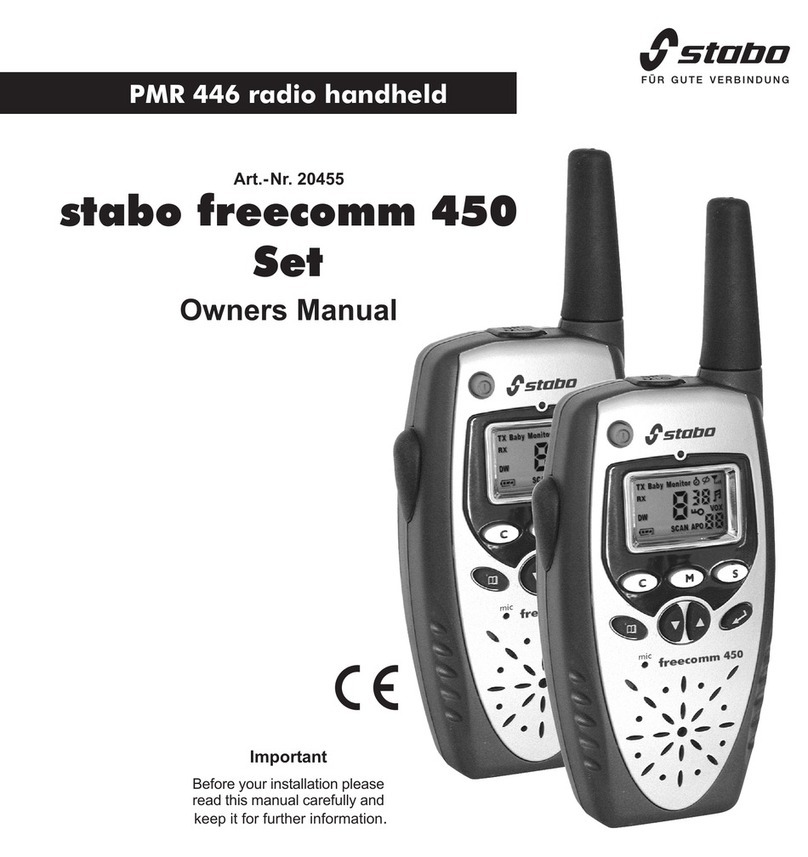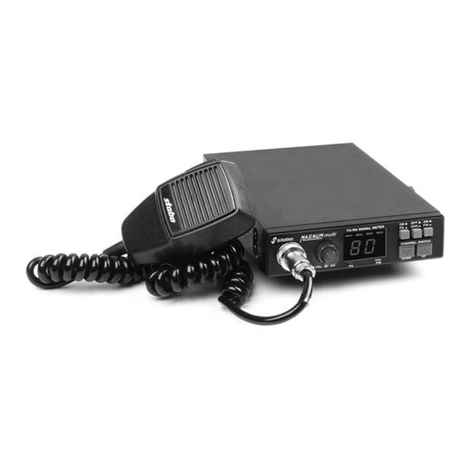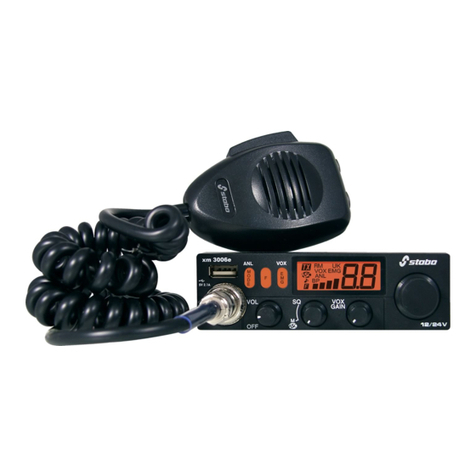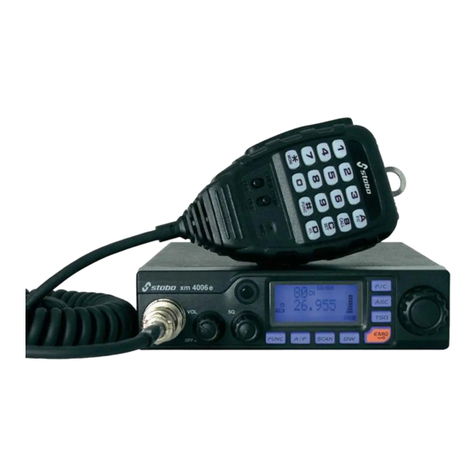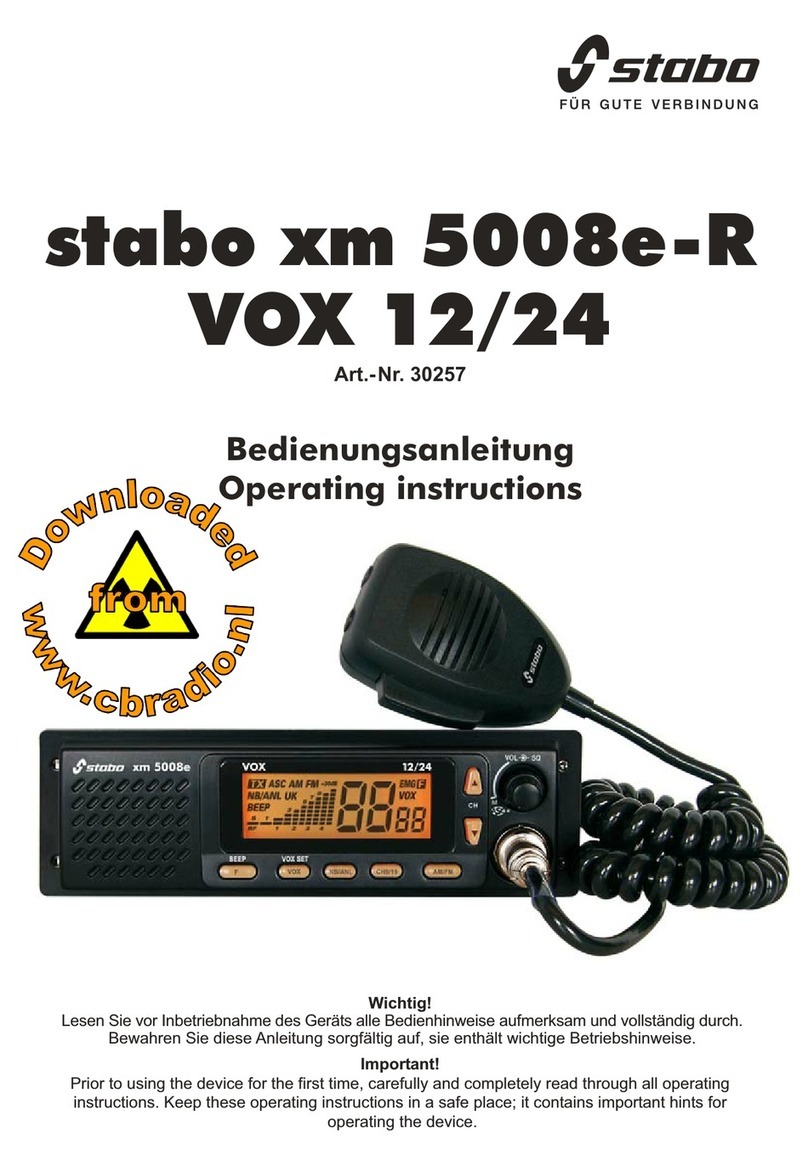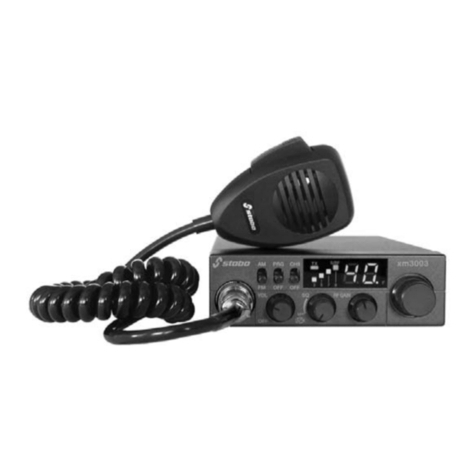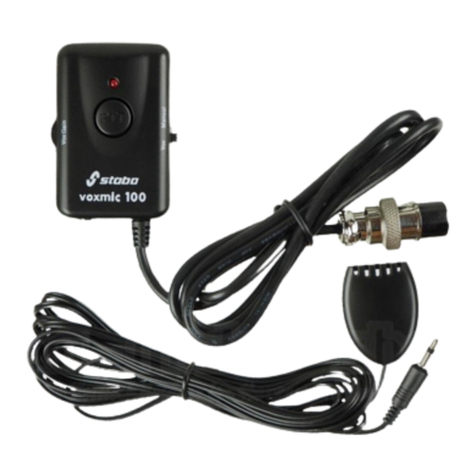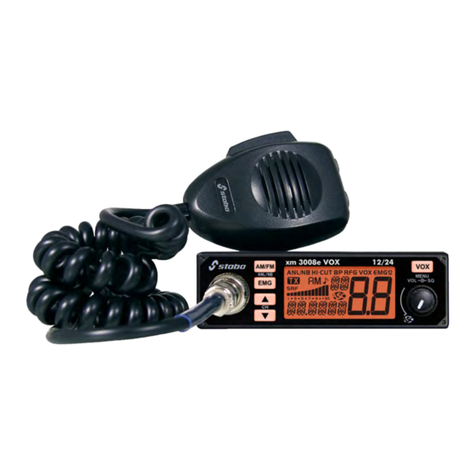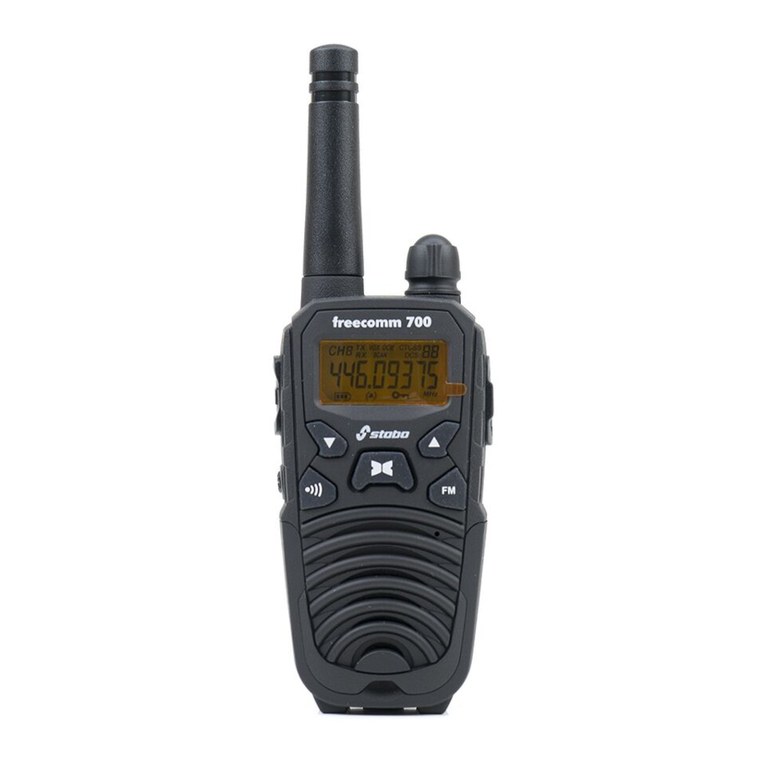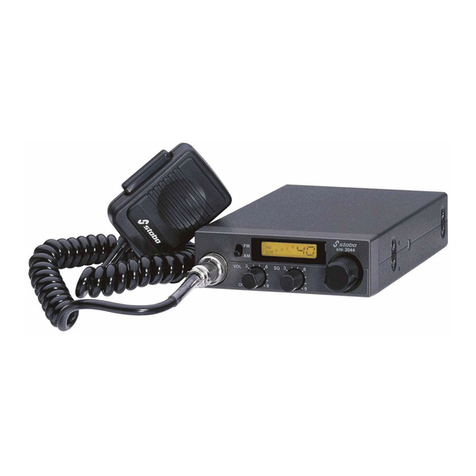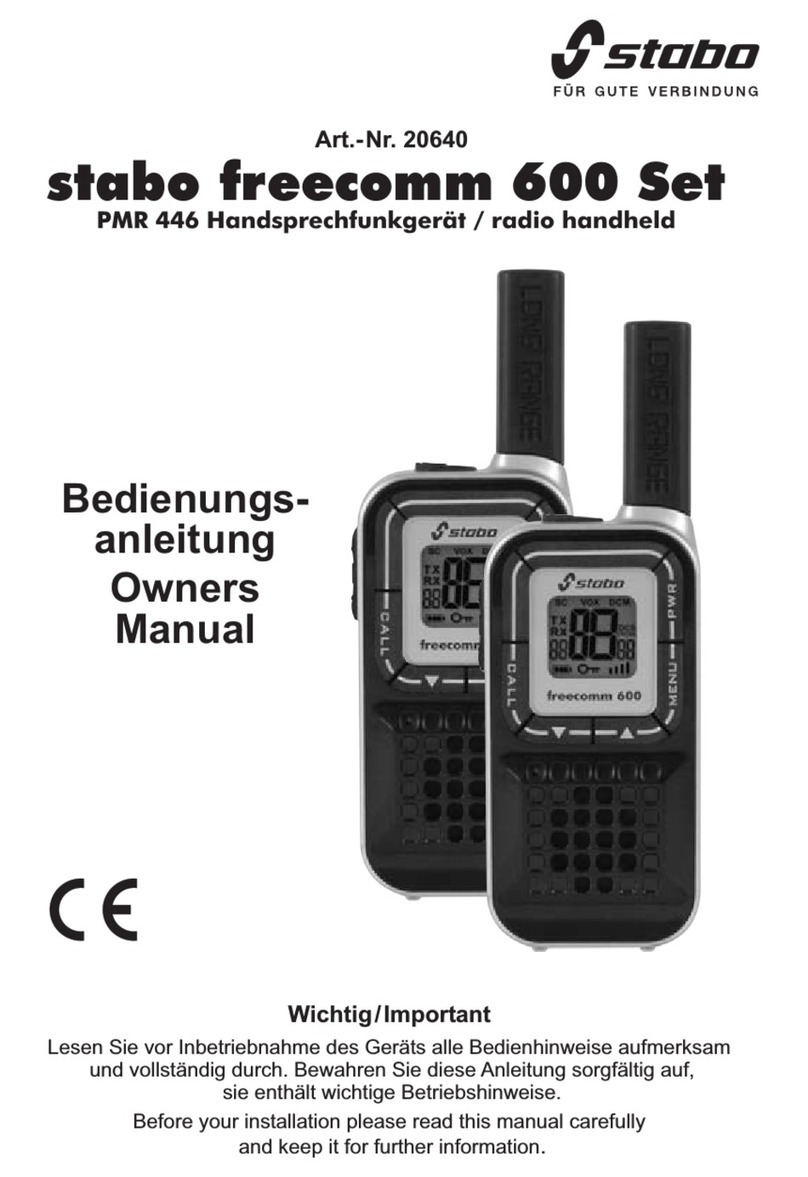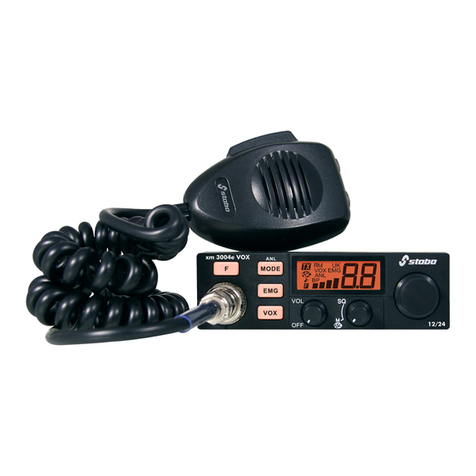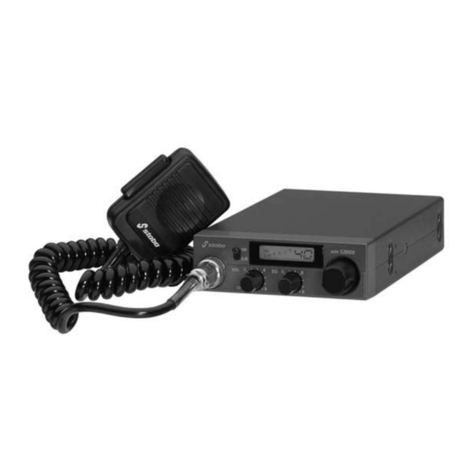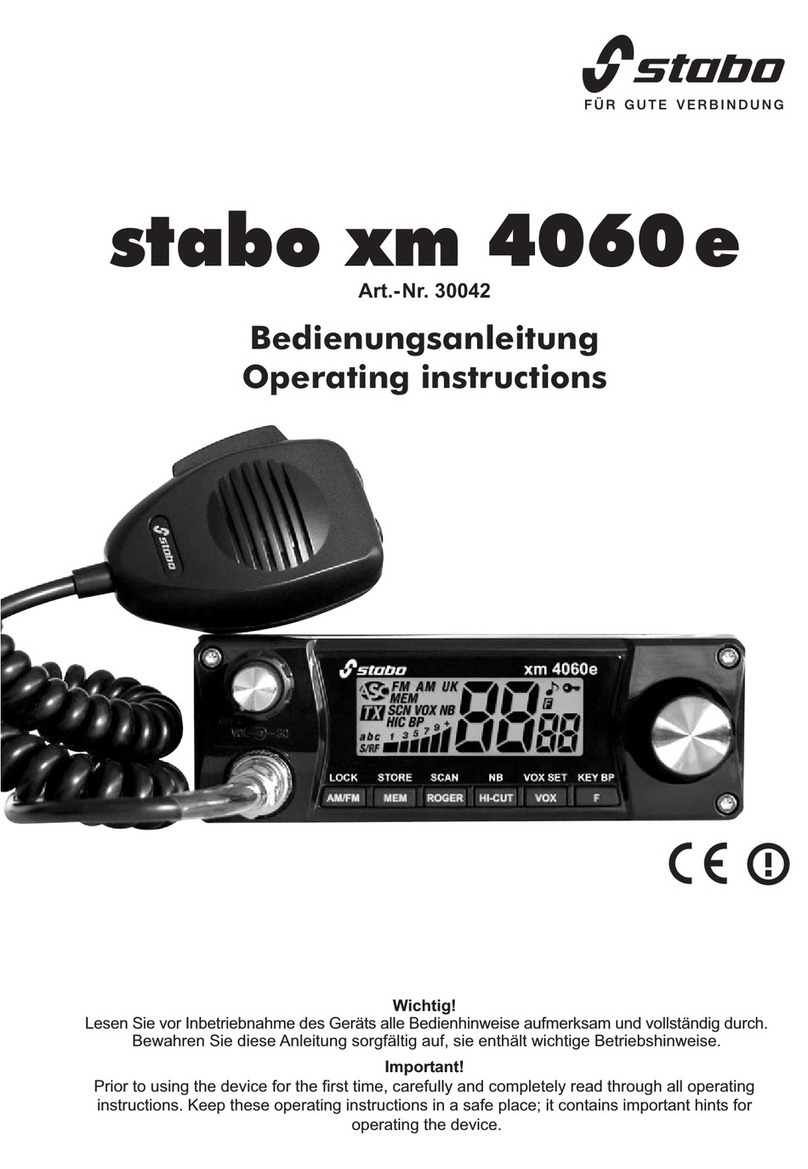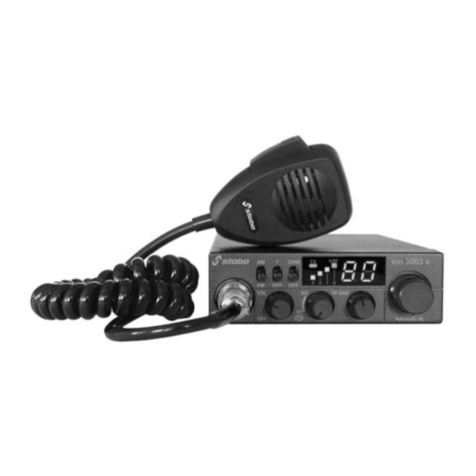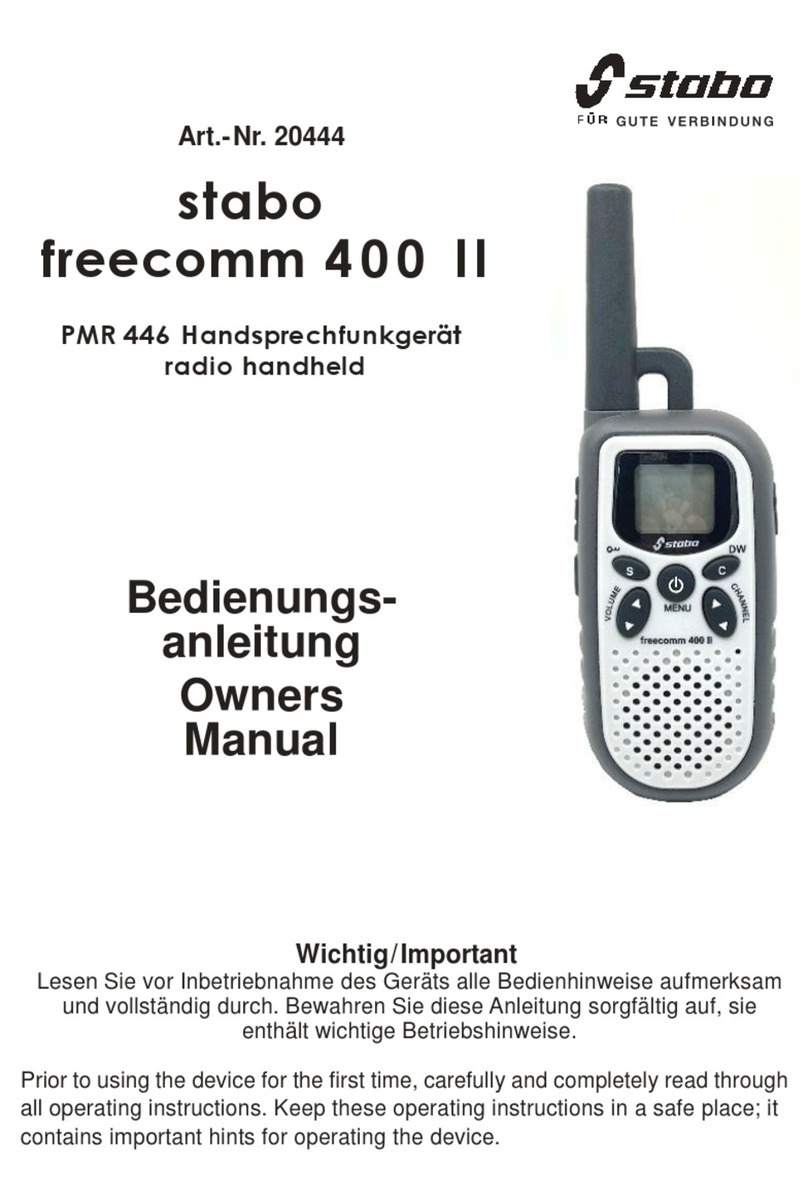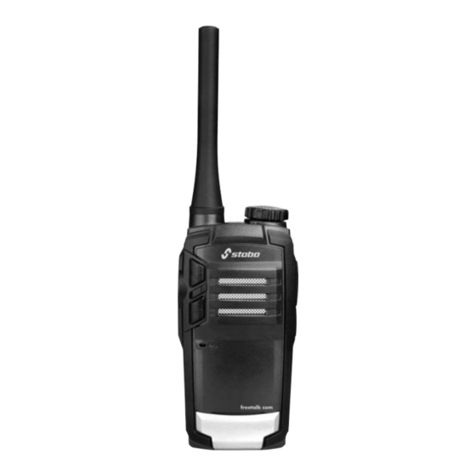Funktionen/Bedienung
Die Bedienung der stabo xm 5006e ist praktisch selbsterklärend. Nach Fertigstellung aller Anschlüsse
schalten Sie Ihr CB-Funkgerät an dem Einsteller/Schalter (VOL) ein, der auch die Lautstärke ein-
stellt. Jetzt sollte das Display leuchten und ein Kanal angezeigt werden. Leuchtet die Anzeige nicht,
überprüfen Sie die Stromversorgung und die Sicherung. Aus dem Lautsprecher sollte Rauschen
zu hören sein. Ist dies nicht der Fall prüfen Sie, ob das Mikrofon angeschlossen ist und drehen
den äußeren Einsteller (SQ/ASC) so, dass Rauschen zu hören ist.
Bitte beachten Sie, dass im linken Endanschlag des Rauschsperreneinstellers die ASC eingeschaltet
ist. Es wird ASC im Display angezeigt und das Gerät ist dann stummgeschaltet.
Frequenztabellen/Kanalkonfiguration
Die stabo xm 5006e verfügt über sechs umschaltbare Frequenztabellen: wählen Sie je nachdem,
in welchem Land Sie Ihr Gerät betreiben wollen die entsprechende Kanalkonfiguration (Werks-
einstellung: EU).
In Deutschland darf das Gerät in den Kanalkonfigurationen EU, d, EC und In betrieben werden.
Es ist anmelde- und gebührenfrei.
Wichtiger Hinweis: Informieren Sie sich vor Nutzung des Geräts im Ausland über die aktuell
geltenden nationalen Vorschriften: beachten Sie die entsprechenden Bestimmungen sowie eine
etwaige Anmeldepflicht!
Kanäle
EU 40 FM/4 W, 40 AM/4 W anmelde- und gebührenfrei in BE, CH, CY, DK, EE, IS, LT, LU, NO, T, SE
anmelde- und gebührenpflichtig in ES, IT
PL 40 FM/4 W, 40 AM/4 W mit -5 kHz Versatz ausschließlich in L erlaubt
d80 FM/4 W, 40 AM/4 W anmelde- und gebührenfrei in DE, CZ
EC 40 FM/4 W Benutzung freigegeben in allen CE T-Staaten, in einzelnen Ländern besteht Anmeldepflicht
U40 AM/FM/4 W (CE T) + 40 FM/4 W (M T 1382) ausschließlich in GB erlaubt
In 27 FM/4 W, 27 AM/4 W in Indien erlaubt
Wechsel der Frequenztabelle/Kanalkonfiguration
1. Schalten Sie das Funkgerät aus.
2. Halten Sie die Taste F gedrückt und schalten Sie das Funkgerät wieder ein.
Im Display wird jetzt die bisher benutzte Kanalkonfiguration blinkend angezeigt.
3. Wählen Sie jetzt mit den Kanaltasten s oder t eine der sechs Konfigurationen aus.
4. Drücken Sie die Taste F erneut, bis ein iepen ertönt und das Blinken aufhört.
5. Schalten Sie das Gerät aus und wieder ein.
Die neue Kanalkonfiguration wird nun rechts unten im Display angezeigt und das Gerät ist mit
der neuen Kanalkonfiguration betriebsbereit.
Kanalwahl (CH)
Mit den beiden Kanalwahltasten (CH) s oder t oder den up/down-Tasten am Mikrofon können
Sie den gewünschten Kanal einstellen, auf dem Sie hören möchten. Wird eine der Tasten länger
als eine halbe Sekunde gedrückt, so wird die Auto Repeat-Funktion eingeschaltet und der Kanal
schaltet automatisch weiter. Der empfangene Kanal wird im Display angezeigt.
Ist der Quittungston eingeschaltet, so wird das Drücken der Taste s mit einem Beep und das
Drücken der Taste t mit zwei Beeps quittiert.
Lautstärkeeinstellung (VOL)
Die Lautstärkeeinstellung geschieht mit dem inneren Knopf (VOL) des Doppelpotentiometers, an
dem auch das Gerät eingeschaltet wurde. Bei fehlendem Empfangssignal und ausgeschalteter
Rauschsperre sollte das Rauschen in der Modulationsart FM gut zu hören sein. Das empfangene
Sprachsignal bei FM ist generell etwas leiser als das Rauschen ohne Signal. Nach Einstellen der
Lautstärke sollte die Rauschsperre aktiviert werden.
7
